I've written two articles recently about the impeachment proceedings, and after publishing each, someone has written to me and accused me of bias. With thousands of people reading these articles, this is to be expected, I suppose.
Well, in these two bias accusations, I was accused once by the left and then next by the right. I'm proud of this fact, as this suggests I'm not actually demonstrating bias. In fact, I believe my political beliefs are not relevant in my role as CEO of A2L. We're not a political entity.
So, I have to warn you, this article is not political, it is not about the content of the statements the presenters made, and it is also not really about the weight of the evidence on either side of the impeachment trial. It is, however, about who won the first day of trial presentations during the Senate impeachment trial — from a trial presentation best-practices standpoint.
On this question, I thought the answer was clear.
Both sides spoke with authority and passion. I believed that they believed what they were saying, and that is critical for any trial lawyer. Both sides scored points both legally and politically. Both sides successfully called into question the credibility of their accusers.
The House Managers have the burden of proof, so it is natural to expect them to make a case while the defense need only focus on refuting the accusations and questioning the motivations of the accusers. However, there are many audiences here - most critically, the Senate (the jurors/judges) and the public at large (the political audience). Both sides need to appeal to both to be legally and politically persuasive.
From the viewpoint of who followed trial presentation best practices and thus was objectively more persuasive (or subjectively for those few people open to being persuaded), the House Managers won the day for one simple reason. They used PowerPoint.
Given the trial experience and training of the defense team, I'm somewhat surprised they made a decision not to use litigation graphics. On the one hand, their win is essentially a foregone conclusion, so I get it. In a courtroom in that situation, you say as little as possible because a win is a win. However, here, that is only true for the impeachment trial itself. To engage the political audience (those watching the trial on TV), you need to use visuals to support your point as one would need to in a trial. How do we know this?
One article we published explains why (see If It Looks Like a Courtroom, Treat It Like One), but in summary, all of the current persuasion science tells us that in an adversarial proceeding, professionally prepared visual aids enhance persuasion, credibility, retention, and more.
I really have to applaud the efforts of the House Managers to use litigation graphics. Ten years ago, they would not have because persuasion science was not widely understood. Furthermore, some might have said (and I still hear this from trial lawyers today), there is nothing visual about this case, so why use visuals. See My Case Is Not Visual – So Why Do I Need Litigation Graphics?
Now the House Managers' litigation graphics were far from perfect. In some cases, the House Managers' litigation graphics were helpful, and in some cases, they were hurtful. Most likely, they were prepared by someone who can use PowerPoint well but who really does not understand the science of what persuades.
For example, showing key evidence (when allowed) during your opening statement is a fantastic technique. It is persuasive (even more so when you can read the text clearly).
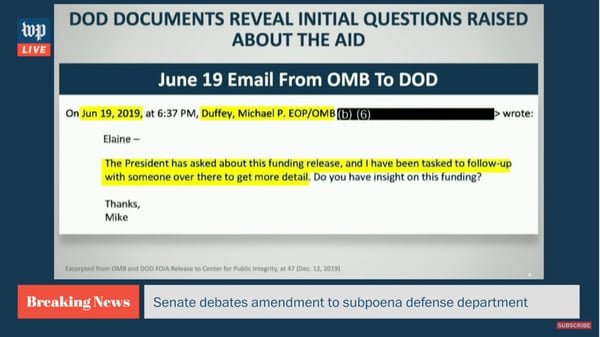
Reading a bullet point list word for word (whether it is enumerated or bulleted in any form), hurts persuasion. See 12 Reasons Bullet Points Are Bad (in Trial Graphics or Anywhere), Still Think Persuasion is About Talking While Showing Bullet Points?, The Redundancy Effect, PowerPoint and Legal Graphics, and 12 Ways to SUCCESSFULLY Combine Oral and Visual Presentations. This slide could have been fixed by shortening the text and graying out each item that was not being discussed so the view knows what to look at.
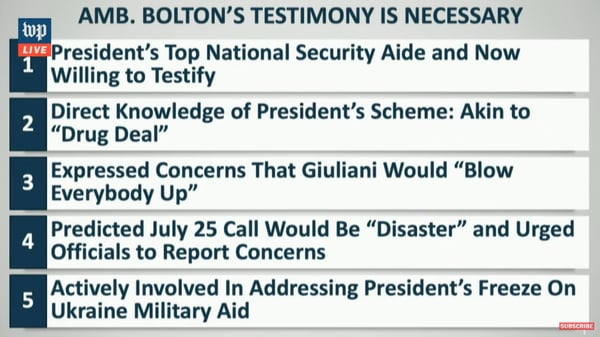
Showing a simple chart with data points that support your point without reading every last line of the chart is fantastically persuasive.
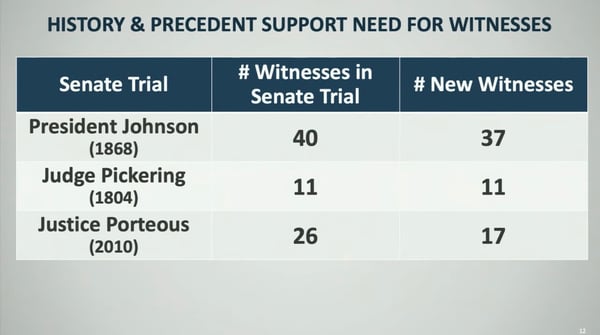
Reproducing your trial outline on your slide and reading from it literally damages your ability to persuade. This could be fixed by radically simplifying this slide so that one statement appears at once. See Don't Use PowerPoint as a Crutch in Trial or Anywhere.
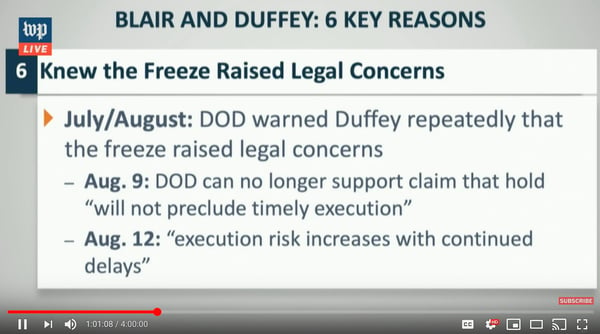
Showing video of your opponent and using their words (or marketing materials, or emails, etc.) against them is persuasive.

Showing too much text on a single slide while talking at the same time is the single most common mistake trial lawyers make. See How Much Text on a PowerPoint Slide is Too Much? and 12 Ways to Eliminate "But I Need Everything On That PowerPoint Slide". No one can listen to a speaker and interpret all of the text on this slide. It's just not possible.
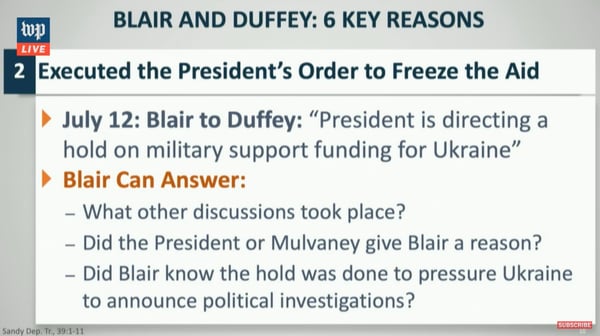
These "rules" of persuasion are complicated. It takes a lot of time to learn them and a lot of trial preparation time to follow them. If you do, you will increase your chances of persuading and winning. If you don't subscribe to our blog that discusses these and other persuasion-focused topics, you should. You can claim or share a free subscription by following this link: https://www.a2lc.com/blog/free-subscription-to-the-litigation-consulting-report
See previous impeachment-focused articles Impeachment Hearings Provide Trial Technology Lessons and 5 Litigation Graphics Lessons from the Impeachment Hearings


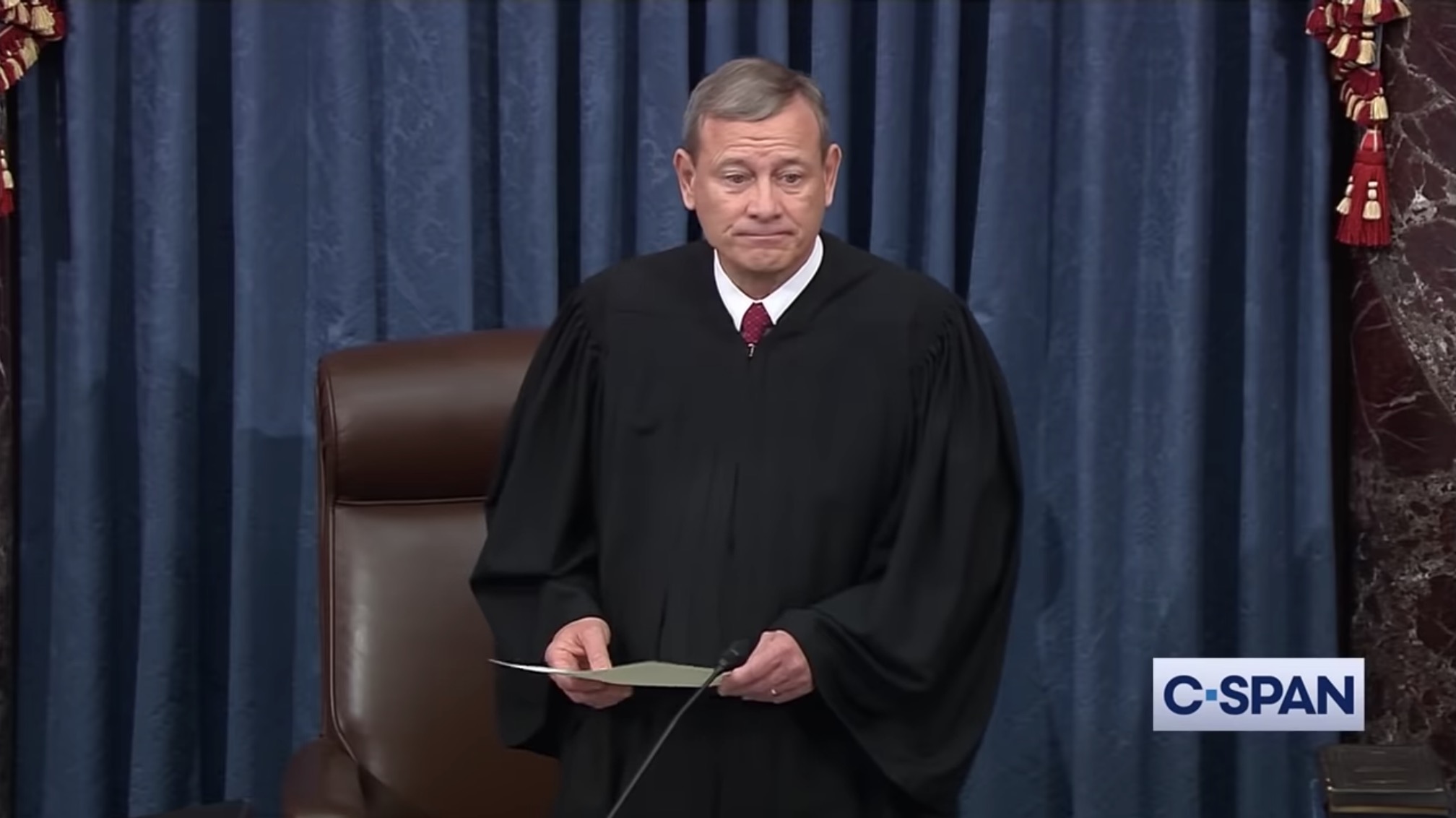



Leave a Comment